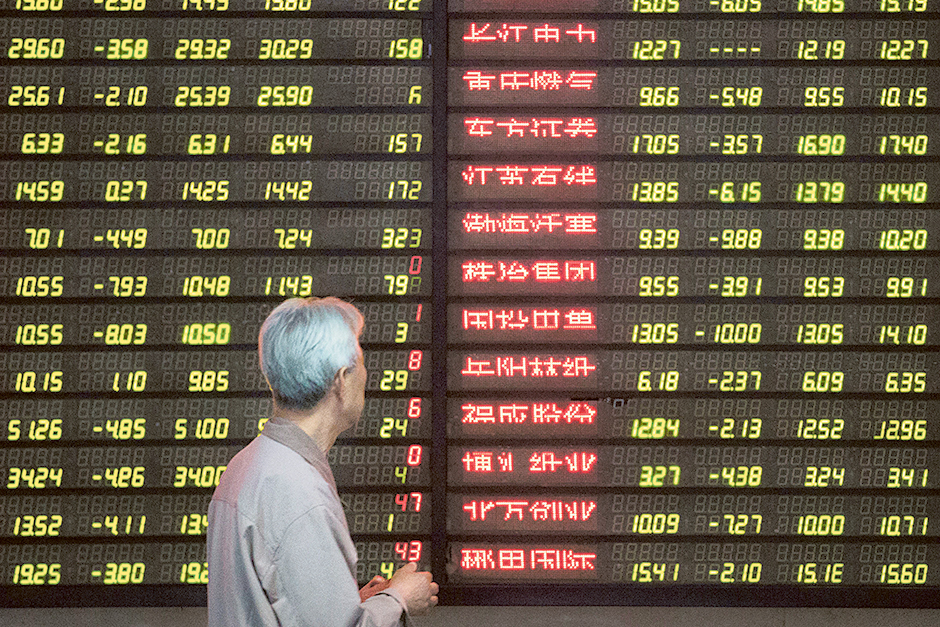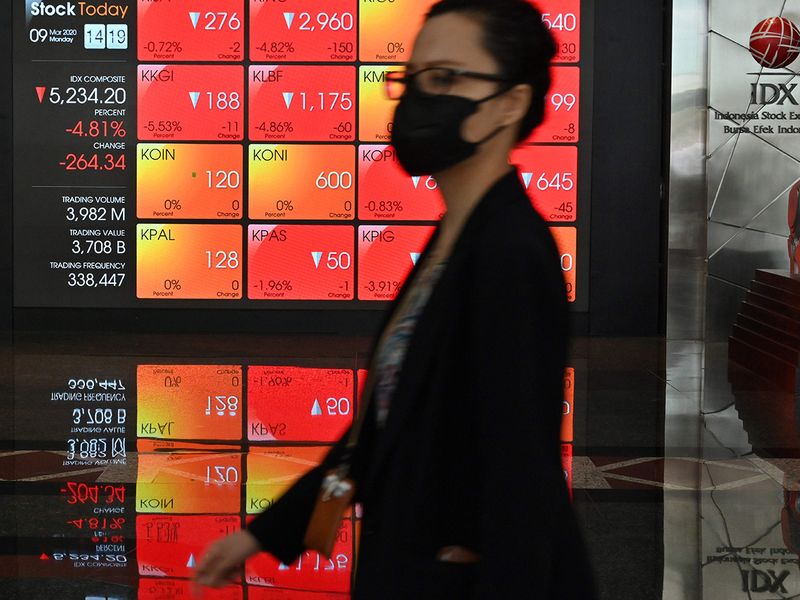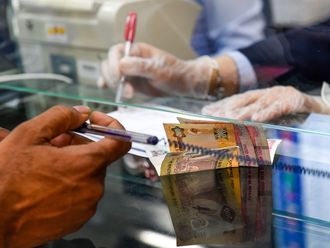
The finance industry does generally tend to equate risk with volatility. The bumpier the anticipated ride, the more risky the investment is said to be.
By this definition, an investor in a mixed basket of emerging market shares would certainly be classified as holding a risky bunch of assets. Here is why.
The bumpier the anticipated ride, the more risky the investment is said to be.
Looking at how emerging markets have performed over the last decade, with the ups and downs in percentage terms of the MSCI Emerging Markets Index, it has evidently been a roller-coaster ride.
When compared to developed markets, emerging ones has historically faced greater volatility when sentiment sours or a good news story hits, with price swings comparatively being more extreme.
It is just as how it isn’t a one-way track for an emerging or developing economy to turn into developed one, with chances that a political upheaval, natural disasters or a host of other events setting countries back several years.
Why can emerging markets turn volatile?
Emerging markets are more vulnerable to the consensus view.
Like when investors with the world’s largest funds decide to dial back on emerging markets as a percentage of their mixed portfolios, and move as a herd onto developed markets, these markets face bouts of volatility.
Analysts have often found that emerging markets can also rely more on trade and be vulnerable to currency movements and any trade war-related geo-political developments or news. This has been seen recently in the political spats between the US and China and Turkey.
Emerging markets are vulnerable to currency movements and any trade war-related news.
And also, corporate governance tends to be less rigid in these markets, where at the more extreme end we may see bribery and corruption, making investors averse to investing in markets that are unstable.
However, market experts have observed how these risks increase the value of great local knowledge and it’s easier to have ‘an edge’ in these markets over their more mature developed counterparts.

Also, one should keep in mind that the volatility described above also presents opportunities.
It has been historically proven that sometimes the herd is wrong and where depressions are driven by sentiment rather than fundamentals, longer-term investors can benefit from unwarranted falls in price.
Remember that volatility also presents opportunities!
Barreling down with rise of COVID-19
Like all equity markets, emerging markets equities entered 2020 off a very good run in the fourth quarter of 2019 and ended the first quarter significantly lower.
The reason was, of course, the rapid spread of the novel coronavirus or COVID-19 during the three month period.
Since then, COVID-19 has swept around the world, forcing business closures and restrictions on public gatherings and movement in many major economies, threatening public health systems in some of the worst-hit regions, and triggering massive sell-offs in every imaginable risk asset.
And so, the MSCI Emerging Markets Index saw its values drop 24 per cent lower in the first quarter, despite a recovery in the last week of March helped by unprecedented global central bank measures.
Emerging markets struck worldwide
The virus itself affected different corners of the emerging markets in remarkably different ways.
Latin America was the hardest-hit region, with the MSCI Emerging Markets Latin America Index down 46 per cent year to date. Even the best-performing country market, the MSCI China Index, was down 10 per cent.
The virus itself affected different corners of the emerging markets in remarkably different ways.
In Asia, several places showed cautious signs of recovery as of the end of the first quarter. South Korea seemed to have contained its outbreak quickly and efficiently, a fact widely attributed to abundant testing.
With many other emerging markets slipping into recession, their governments are enacting fiscal and monetary stimulus to get growth back on track, even at the risk of further weakening their currencies.

Oil shocks fuel COVID-19-triggered instability
The emerging markets are home to both winners (importers) and losers (exporters) of an oil price plunge.
And with oil contracts slumping over 70 per cent to date as a slump in demand led to oversupply amid lack of storage space, investors panicked thinking of what repercussions could follow.
Emerging markets are home to both winners (importers) and losers (exporters) of an oil price plunge.
While a declining oil price would be challenging for Russia, Colombia, Mexico, and Brazil, importers such as India, Indonesia, the Philippines, South Korea, Turkey, and Central and Eastern Europe could benefit.
Smaller countries with unstable governments that are almost wholly dependent on oil revenue may be the most vulnerable.
Performance of so-called “safe” EM debt
Emerging markets debt suffered its worst quarterly return on record in the first quarter of 2020, a 14 per cent loss that fully erased the strong gains earned in 2019. Every part of the asset class was down significantly.
As is typically the case in a risk-off environment, local debt, which is the riskiest part of the asset class, was the drag, down around 15 per cent. Local currencies, which are highly sensitive to growth and the direction of the US dollar, were down more than 14 per cent.
In hard currency debt, sovereigns were down 13 per cent, while corporates fared slightly better with a decline of "only” 10 per cent.
Given the extreme valuation levels in emerging markets debt, investors would want to know whether the time to capitalize on this opportunity is now.

Why EMs face higher risk in post-COVID times?
As analysts call for more restraint when investing in emerging markets, they have begun to list out several key risks the emerging markets are vulnerable of facing – any one of which could lead to even more volatility in the asset class.
• Major investors could flee, reversing the $310 billion in inflows the asset class enjoyed in 2018.
• With the oil shock expected to persist, this puts a heavier fiscal strain on commodity exporters.
Given that currently no one can estimate how deep the damage is, many argue it is still far too risky.
• Global supply chains could collapse, leading to continued and more widespread trade uncertainty than that caused by the US-China trade war.
• Sharp currency depreciation could begin to weigh on countries with large amounts of debt denominated in US dollars.
Let’s now further look at why emerging markets have to face the brunt of a pandemic in the coming days.
Unequal capabilities to survive a pandemic
Emerging markets have unequal capabilities to fight a pandemic. The lower their capabilities, the longer confinement could last.
Analysts find markets such as Nigeria, Ukraine, Argentina, Romania and India as the most vulnerable. Given the spread of the COVID-19 crisis, most EMs have implemented national or partial lockdowns because of their very weak health systems.
EMs have unequal capabilities to fight a pandemic - so, longer the confinement, sharper the recession.
The longer the confinement, the sharper the recession, analysts warn, while also forecasting Czechia, Slovakia, Mexico, Brazil, Argentina, Thailand, India, Nigeria and South Africa to register strong recessions in the emerging world.
“Some EMs already exhibited sources of vulnerability before the Covid-19 crisis, with overvalued currencies, oil/tourism revenue/export dependency and little room to manoeuver,” Ludovic Subran, chief economist at Allianz, the largest insurer and investor in Europe, wrote in a note.

“Now, the pandemic presents a triple economic shock – trade, financial and consumption – on top of the health policy challenge.
“In particular, the sharp correction of equity prices and the significant appreciation of the Dollar, as well as a generalized trend of widening in corporate and sovereign spreads, have contributed to a marked tightening of monetary and financial conditions.”
Some EMs exhibited sources of vulnerability before the crisis. Now, the pandemic presents a triple economic shock – trade, financial and consumption – on top of the health policy challenge.
EMs aren’t developed enough to do “whatever it takes”
While the rest of the world does “whatever it takes” to survive a virus-induced lockdown though unprecedented levels of stimulus measures, questions are now increasingly about whether emerging markets can afford to take similar drastic steps?
Emerging markets have generally been more cautious than developed markets in both monetary and fiscal policy responses.
On the monetary side, a contrast to earlier crises is that most EMs had room to cut rates.
Although several emerging markets began at the onset of the crisis having had better initial conditions compared to 2008, they still face the issue of having limitations to manoeuver to stimulate the economy much further without further negative implications.
So now the rising threat is that, as some EMs are immensely dependent on international capital markets to finance growth on account of large deficits and external debt - they may not have institutions with sufficient ammunition (low fiscal space) or credibility to experiment further (Quantitative easing, debt monetization).
Debt monetization is the financing of government operations by the central bank.
If a nation's expenditure exceeds its revenues, it incurs a government deficit which can be financed – either by the government treasury or by money it already holds (e.g. income or liquidations from a sovereign wealth fund) issuing new bonds.
Developing trends in capital outflows from EMs
With emerging markets hit by a combination of macro shocks, the key challenge analysts say is to avoid medium-term growth being impacted.
A way to accomplish this is to use available monetary and fiscal space. But analysts question whether more will be needed as COVID-19 continues to spread.
Analysts question whether existing monetary and fiscal space will suffice as COVID-19 continues to spread.
The rising threat is again on the fiscal side of things. Since many EM are also commodity exporters struggling with lower prices and already confronting high stocks of debt, new spending commitments have been modest.
As infection rates are still rising in many EMs, analysts are concerned that these measures will fall short and multilateral support be needed.

So, what this means is commodity-exporting EMs facing low commodity prices will be forced to cut spending and will not have room to support their respective economies. This includes Algeria, Angola, Bahrain, Nigeria, and Oman.
Emerging market currencies have experienced dramatic declines as well. In response, most EM central banks cut interest rates, taking advantage of the policy space provided by unprecedented easing.
While some central banks have introduced quantitative easing-type measures, these are unlikely to be enough to compensate for the exit of foreign investors.
While some central banks have introduced quantitative easing-type measures (e.g. Hungary, Poland, South Africa, and Turkey), these are unlikely to be enough to compensate for the exit of foreign investors.
Analysts also warn that should the liquidity crisis turn into a debt crisis, the large EMs most at risk of rating downgrades and subsequent sovereign or corporate defaults are: Argentina, Turkey, South Africa, Mexico, Chile, Pakistan, Indonesia, Malaysia, Romania and Poland.
A wave of (sovereign and corporate) defaults cannot be excluded at the bottom of the crisis, or the months thereafter, matter experts further caution, while also warning that some countries are more at risk than others of being pushed into IMF financial support, notably South Africa.
So, the COVID-19 crisis is seen widening emerging market fiscal deficits, raising risk for those facing high borrowing needs or relying heavily on bond issuance to non-residents. This type of risk is high in Mexico and South Africa.
2020 outlook for emerging markets?
With the COVID-19 shock having led to a pronounced sudden stop in in capital flows to emerging markets and with record outflows already recorded in the first quarter of this year, analysts expect only a modest recovery in capital flows in the second half of 2020.
Only a modest recovery seen in capital flows in the second half of 2020, but trend experts do not see the pickup strong enough to bring about a return to 2019 levels.
While they largely expect a recovery of flows in the second half of 2020, trend experts do not believe that the pickup will be strong enough to bring about a return to 2019 levels. So, capital flows to EMs will be much weaker than in 2019.
For many EMs, weaker inflows mean that they will not be able to continue to run large current account deficits and rapid adjustments are imminent, like having to draw down reserves.
Also, many countries will have to turn to multilateral support in coming months due to a lack of policy space to support their economies.
Another cause for worry will be total foreign investments in emerging markets (excluding China), which are expected to drop to its lowest since 2004.
Now the markets have seen something of a “dead cat bounce”, according to analysts of Institute of International Finance (IIF), which tracks capital flows. (A ‘dead cat bounce’ is a small, brief recovery in the price of a declining stock.)








